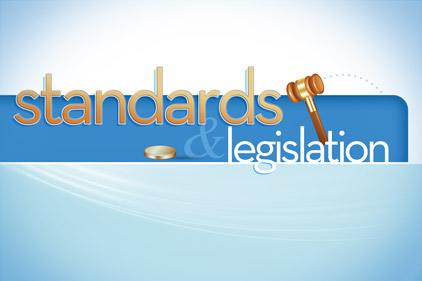How the Expiration Is Being Received
Several industry members shared their thoughts about 25C on The NEWS’ LinkedIn discussion group.
Jim Rutz, vice president of marketing and sales at Magic Aire (Wichita Falls, Texas), said it is easy for individuals to get addicted to government subsidies.
“It’s time we stop contorting the market with false incentives that come and go with the political winds,” he said. “If the energy efficiency improvements do not have payback without subsidies, then they probably aren’t worth it.”
Robin Boyd, a consultant with H-VAC Consulting (Lancaster, Pa.), said it is wrong that standards are being driven by government’s redistribution of the industry’s own money. “These sorts of government redistributions of tax money have the same effect on our economy and innovations as does giving a person with a broken leg a shot of morphine. Sure, you feel better for a while, but you still have a broken leg,” he said. “I feel it would be more beneficial for both consumers, and our industry, if government would stop interfering and allow corporate competition to drive the market.”
Adam Gloss, vice president of Bel Red Energy Solutions (Seattle), said his business will survive without the tax credit, but would be better off if it were reinstated.
“A strong tax credit program would help me to sell more equipment, as more consumers would be able to afford the investment. It would allow me to hire more staff — increasing overall employment — thereby increasing spending in the economy,” he said. “It would also allow homeowners who benefit from it to save on energy and inject savings into the economy, providing more economic volume and jobs for others. Once the economy is on the road to recovery, you can remove the supports that were put in place and allow the engine you fueled to drive itself.”
Ken Bodwell, COO and CFO of Innovative Service Solutions (Orlando, Fla.), said 25C has had a positive effect on all utility consumers because it’s helped lower demand on all resources.
“On one hand, I’m not in favor of any government programs paid for by taxpayers benefitting a select group, yet this program directly returns tax monies collected to middle-class homeowners who probably pay the most,” he said. “It stimulates sales and creates jobs.”
Was the Credit Utilized?
Data shows the credit — especially when increased to $1,500 — was being used. IRS Statistics of Income data from 2009 estimate $25.1 billion was spent nationwide on retrofit costs associated with the 25C tax credit, with more than $5 billion returned in incentives.
According to a National Association of Home Builders (NAHB) report, 34 percent of 25C claims in 2009 were connected to windows and skylights; 17 percent, hot water boilers; 16 percent, heat pumps, air conditioners, water heaters, and stoves; 13 percent, insulation; 9 percent, doors; 9 percent, qualified roofing materials; and 3 percent, air circulating fans used with a natural gas, propane, or oil furnace.
Middle-class households used the credit most as 2009 IRS statistics estimate more than two-thirds of households claiming the tax credit had an adjusted gross income of less than $100,000, and more than 92 percent of claims were made by households earning $200,000 or less.
“This incentive is being used by middle-class Americans who want to implement energy efficiency improvements,” said Charlie McCrudden, vice president of government relations for the Air Conditioning Contractors of America (ACCA). “While there is an initial cost, this credit encourages retrofits, helps people with their utility bills, and helps reduce the use of fossil fuels.”
Tom Simchak, senior research associate with the Alliance to Save Energy, said 25C has been extremely helpful in raising energy efficiency awareness. “Home improvement stores and contractors used the tax credit to drive business, and all for efficient products that they were publicizing to potential customers,” said Simchak. “While the absence of 25C in 2012 means that ongoing publicity for the credits will be reduced, the increased awareness will remain for some time.”
Will 25C Credits Be Extended in 2012?
Industry officials representing the Air-Conditioning, Heating, and Refrigeration Institute (AHRI); Heating, Airconditioning, and Refrigeration Distributors International (HARDI); and ACCA insist 25C is a beneficial program. While they would prefer to see the tax credit extended in 2012, the current climate in Washington, D.C., has transformed their hopefulness into pessimism.
“We have been working hard on Capitol Hill to push for an extension,” said David Calabrese, AHRI senior vice president of public policy. “Extending 25C is a priority for us and our members, but we are trying to be realistic. Very little made it through Congress last year and now we are entering an election year — notoriously an even slower period for Congress. But, with so many tax provisions expiring, I think Congress has to put together some kind of package. 25C is so effective and so beneficial to businesses and consumers alike, even Congress can’t ignore that.”
Jonathan Melchi, HARDI director of government affairs, believes an extension is unlikely in 2012.
“As an organization, we are anticipating that 25C will not be renewed,” he said. “While I am sure there will be some people disappointed to see the credit go, the fact is the drop from a $1,500 credit in 2010, to the lower restricted levels in 2011, had much more of a negative impact on sales and more or less dampened distributor enthusiasm for the credit.”
McCrudden said if an extension doesn’t occur in January or February, it likely never will.
“Our disappointment in the 2010 extension led us to get started on this very early in the year. Members of the 25C coalition and I began meeting on Capitol Hill as early as February 2011 to get this approved by the close of the calendar year, but Congress chose to let it expire,” he said. “The most likely vehicle for a 25C extension may be the payroll tax holiday, which is up in February. But, Congress has chosen many times to kick the can down the road. We’ll see very soon if they opt to kick the can for a couple more months.”
SIDEBAR: The History of 25C
The 25C credit was first implemented in 2005 and allowed eligible taxpayers to claim 10 percent, up to $500, on costs associated with the installation of qualified HVAC equipment, hot water heaters, windows, doors, insulation, and roofing material installations that improved energy efficiency ratings.
The credit expired in 2008, but lawmakers implemented a modified version in February 2009, as part of the American Recovery and Reinvestment Act of 2009. The revision increased the maximum obtainable credit from $500 to $1,500, or 30 percent of qualified installation costs, removed individual appliance caps, and eliminated a lifetime cap on previous claims.
SIDEBAR: 2011 Extension of 25C
In December 2010, Congress again extended the credit, this time through 2011, but returned the $1,500 incentive to the original $500 amount, and reinstated appliance and lifetime caps. By reinstating the lifetime cap, any household utilizing the credit since 2005 became ineligible to reuse the incentive.
The 2011 extension also reduced the maximum amount a homeowner could claim for HVAC and hot water improvements to $300. Qualified furnace and hot water boiler maximums were dropped to $150, and advanced main air circulating fan benefits were capped at $50.
To qualify for credit, natural gas hot water boilers, propane hot water boilers, oil hot water boilers, and oil furnaces were required to be 95 percent AFUE or higher. Natural gas furnaces and propane furnace regulations remained at 95 percent AFUE. Central air conditioners and heat pump qualifications remained unchanged at 16 SEER and 13 EER. Air-source heat pump requirements were set at 15 SEER, 12.5 EER, and 8.5 HSPF to qualify.
Publication date: 01/23/2012











